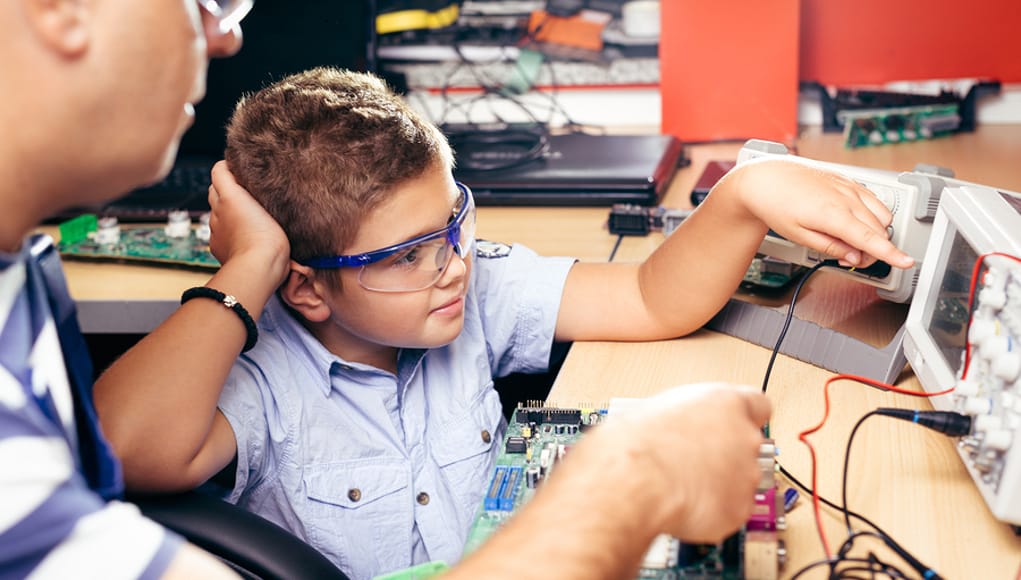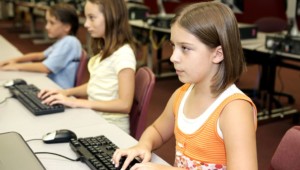4 Ways Project-Based Learning Prepares Students For the Future of Work

There are many reasons why project-based learning may be the best pedagogy for all students. Indeed, PBL is intended to be engaging, collaborative, tech-ready, student-owned and personalized. But, there may not be a better reason for PBL than that of preparing all students for a rapidly changing world – especially the future of work.
Whether we discuss the impact of globalization, the gig economy, artificial intelligence or new technologies, it seems that our students are entering an uncharted work world that will require them to be much more adaptive, creative, flexible, growth-oriented and skill-focused than any previous generations. I’d like to demonstrate that high-quality project-based learning effectively advances our students’ core skills of the future. Here are four of them:
One: Creativity Skills
This term is used so often it’s hard not to see it as a cliche. But it is a skill that is no longer reserved for certain professions. Whether it’s innovation, problem-solving, branding, networking, collaborating or competing, professionals are going to be expected to be creative. We need to help others see creativity as a vital aspect of every professional and personal endeavor worth examining. Really, creativity is part of everything – every idea that becomes a reality. Creativity exists in how we work, whom we partner with, what we choose to produce, where we choose to work and what tools we choose to use. Creativity occurs when we focus our energy, time and resources on being turning ideas into reality. It’s a process that we all have the capacity for, but all must invest in as well.
PBL and Creativity Skills
Authentic public projects that address real-world challenges allow students to take on various roles where they can optimize their expertise and assume high levels of responsibility. PBL allows students to often have choices and a say in those choices – whether it’s which aspect of a challenge they would like to address, how they would like to address and how they will get others to see their work. It’s these choices that not only allows for creativity but demand it. PBL allows both the individual and the team to both see creativity in themselves and others in new ways, as well as how to apply their individual and collective creative capacity to real-world work.
Two: Leadership / Global Citizenship Skills
Like creativity, we used to often think that leadership was something that only certain individuals possess. The new world of work will require everyone to be capable of exercising leadership. Much of the future of work will come from both our ability and urgency to address the real-world issues that face us. When one thinks of challenges like climate change, universal health care, food and water quality/accessibility, education and renewable energies, we may only think about these overwhelming and often seemingly insurmountable challenges. But the truth is that these also present us the greatest opportunity to redefine our work. These problems need to be addressed and new jobs will be created as we address them. The world is truly getting smaller and our problems seem to be getting bigger. This requires the next generation of young professionals to all be global citizens.
PBL and Leadership / Global Citizenship Skills
Because PBL first focuses on addressing real-world problems, it places students right where they need to be. Whether it’s a schoolwide concern, a local community challenge or a global need, they are set-up to connect their academic standards and skills to things that matter to them and others. High-quality projects not only push them into global citizen mode but also allows them to access, practice and showcase their individual leadership skills. High-quality projects will create opportunities for them to collaborate with outside partners, share their work with their community and ultimately see that their work can contribute to the larger work of the world. That is leadership. Aren’t leaders those who step up to take on challenges while often showing fearlessness, creativity, compassion, and results?
Three: Initiative and Entrepreneurism Skills
Like Creativity and Leadership, Entrepreneurial skills were often seen as something only a few of us may need depending on our career choices. But in a Gig Economy, where future work will have to continually be secured, this skill set may be more important and universal than ever. Think about the initiative it takes to find one’s career and profession, to pursue advancement and new challenges, and to adapt to an ever-changing professional landscape. The ability for individuals to be self-starters who can appropriately identify what needs to be done and then do it is highly sought by employers. Everyone will be expected to be able to articulate the vision and mission of our organizations, as well as how to deliver an effective elevator pitch on whatever project we’re currently pursuing.
PBL and Initiative and Entrepreneurism Skills
Because high-quality PBL expects students to tackle real-world challenges, invest some of themselves through choices and take on specific roles, they develop an entrepreneurial spirit. School has traditionally killed much of this spirit. PBL fosters it. Students are very accustomed to step-by-step processes and workflows. PBL has students making decisions, investigating possible directions, and discussing approaches with peers and professionals. In a PBL environment, students don’t have to start companies or non-profit organizations (although they can) in order to advance their entrepreneurial skills. They can also create a website, a social media campaign, a YouTube channel, an event, a logo, a hashtag and an endless list that will require them to flex their developing entrepreneurial muscles.
Four: Collaboration Skills
Authentic collaboration is considered to be one of the most important employability skills. Companies can train people on technical skills, but really want people who come prepared to partner. Collective thinking and working produce better ideas. Better ideas produce more innovation. Our potential partners are all around us. They are local companies, non-profits, experts, entrepreneurs, advocates, and civic leaders. It’s mutually beneficial to combine our resources and collaborate for better work.
Collaboration at high levels also provides all of us with opportunities to continually learn and improve. We meet our mentors through projects and partnerships. When we partner, we solve problems. When we work to solve problems, we create opportunities for work and learning. If we want lifelong learning, collaboration is the vehicle.
PBL and Collaboration Skills
Because high-quality PBL begins with students addressing real-world challenges, we are naturally poised to have students collaborate with diverse partners in the form of non-profit organizations, businesses, community groups, and leaders. Yes, PBL is perfectly designed for high-quality peer-to-peer collaboration. But like the real world, the authentic nature of PBL gets students the opportunity to extend their collaborative skills and experiences beyond their peers. It’s this collaboration with outside partners that allows students to buy-in into the learning at higher levels. The more authentic our partners are, the more the work seems relevant, important and meaningful. Collaboration also gives us natural avenues for students to showcase their work and take it public to larger audiences. Our partners have events, websites, active social media campaigns, promotional and advocacy needs and larger networks. As a natural byproduct, students have an expanded network of mentors and leaders who will continue to impact their education and eventual professional careers.
Putting A Bow On It
From my observations, PBL is related to the future of work in more ways than outlined here. PBL creates situations where students continually have to flex their skills in these areas in order to deliver an appropriate product, showcase their work, and address the driving question of a real-world problem. We didn’t directly address Critical Thinking and Problems Solving skills here. However, PBL begins and ends with addressing complex, real-world problems that insert our students in authentic situations where they are having to think critically about research and information, technology, their partners and audiences, workflows, product and idea design, as well as roles and responsibilities. These skills of the future are not developed or experienced in isolation, but rather as they are in the real world of work – simultaneous, in real-time and through the authentic need to produce professional work with a purpose.
For more, see:
- What’s Next in Learning? Four Future Trends
- Service Learning: Designed to Motivate and Inspire
- Eduprotocols: Facilitating Student Collaboration, Creativity and Ownership
Stay in-the-know with innovations in learning by signing up for the weekly Smart Update.







0 Comments
Leave a Comment
Your email address will not be published. All fields are required.